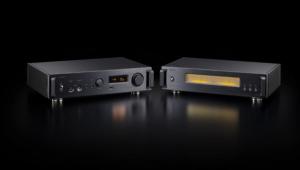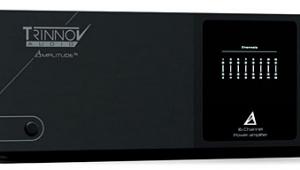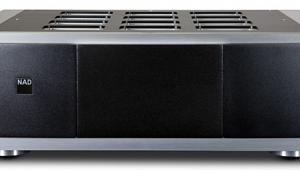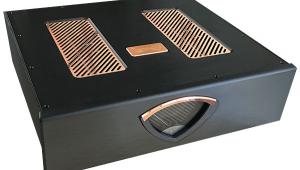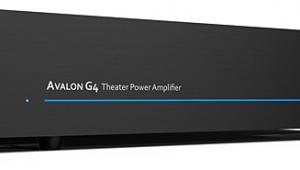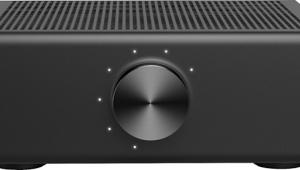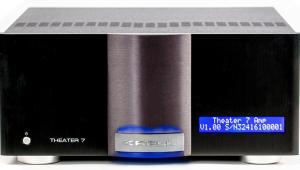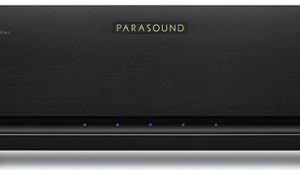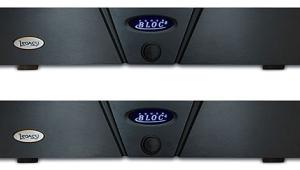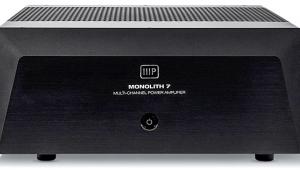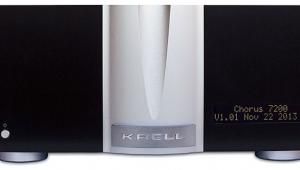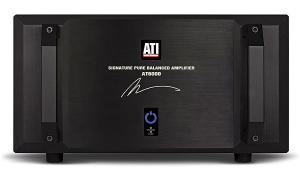Audio Refinement Pre-2DSP & Multi-5 preamplifier-processor & multichannel power amplifier Page 3
The Pre-2DSP has four digital inputs: three RCA coaxial and one optical TosLink. In comparing the sound quality of coax and TosLink connections, many audiophiles have concluded that sound quality is better with coax, and that's what I routinely use with pre-pros. The Pre-2DSP's manual makes no reference to a preference for coaxial connections, but it states that "digital inputs D3 and D4 have better sound results." D3 is one of the coaxial inputs; D4 is the TosLink input. Hmm. This is the first time I've seen a claim that different coaxial inputs may not be equivalent in sound quality. What would account for such an effect?
I called Audio Plus, the importer, and was told that D3 has a shorter signal path than D1 or D2. I was skeptical that a difference in signal-path lengths of what must be just a few centimeters could produce a sonic difference in such a complex piece of equipment, but I felt duty-bound to check out the claim. I'm glad I did! I had thought that the effect, if present at all, would be most subtle, but it was immediately obvious. The sound had more openness and greater immediacy when the coaxial connection was made to D3 rather than D1.
All Systems Go
Whatever annoyance I felt about the Pre-2DSP's idiosyncratic setup and operational logic faded into the background when I started listening to it. The success of audiophile-oriented components such as those from YBA/Audio Refinement has always been based on sound quality, and it took little time for me to conclude that the Pre-2DSP and the Multi-5 had much the same clarity and transparency that are the hallmarks of other YBA products in my experience.
In reviewing a pre-pro and a power amp, my usual practice is to start with the pre-pro, keeping the same power amp I've been listening to in the system. In this case, the amp was the Anthem PVA-7, a $1499 7-channel amplifier that I like a lot, and which was given SGHT's Editors' Choice Gold Award for 2002. The pre-pro that the Pre-2DSP replaced in the system was the Rotel RSP-1066, an outstanding performer at its $1499 price, and another Editors' Choice Gold Award winner.
As good as the RSP-1066 was, I found the Pre-2DSP to be even better in basic sound quality, revealing more of the sonic details with less of an electronic overlay. The difference was most noticeable in the 5.1-channel Bypass mode using multichannel SACDs, such as the Russian "sonic spectaculars" on Vodka & Caviar (Delos DS 3288), which seemed to acquire additional top-end air and openness.
The improvement in clarity was also apparent, albeit less so, with Dolby Digital and DTS soundtracks. With movie soundtracks, the surround directionality and sense of sonic envelopment were excellent, at least matching those of the RSP-1066. In Dark City, the change in ambience between the nightclub scene and the following one in the "mad scientist's laboratory" was immediately apparent. With several pre-pros in the past, I've found that increasing the level of the surrounds by a dB or two over the calibrated levels produces a more convincing sense of ambience without interfering with the front soundstage or the clarity of the dialogue. This was the case with the Pre-2DSP as well.
Once I felt I had a handle on the Pre-2DSP's sound, my next step was to substitute the Multi-5 power amp for the Anthem PVA-7. Again, my feeling was that this component represented another step toward the audiophile ideal of total transparency to the source. YBA electronics have a reputation for sounding "tubelike," but the Multi-5 didn't sound that way at all. Instead, there was the type of clarity and dynamics that I associate with the best of the solid-state breed (like the Bryston 9B-ST that I've had in my system but was no longer available for direct comparison).
Although the PVA-7 and the Multi-5 have similar rated outputs, the Multi-5 sounded more powerful, giving music a greater sense of dynamics. Given the differences in price ($1499 for the PVA-7, $2495 for the Multi-5) and the number of channels (7 vs. 5), the PVA-7 remains an excellent buy, but the added cost of the Multi-5 did give a significant improvement in sound quality, and if you have no plans for a 7-channel system, the extra channels of amplification are just wasted.
The increased popularity of DVD and HDTV has placed greater emphasis on the quality of a pre-pro's video section, with video bandwidth now being fairly routinely cited in specifications. However, the Pre-2DSP's manual is silent on this point. I queried the folks at Audio Plus about the Pre-2DSP's video bandwidth, and was told that they did not have this information available.
While the Pre-2DSP may have been lacking in formal video specifications, its performance showed that YBA/Audio Refinement did not neglect video quality in designing the product. Viewing DVDs and HDTV sources using a DreamVision LC-5 projector, I could see no significant degradation of the picture quality when the component-video signal was routed through the Pre-2DSP compared with a direct connection between the projector and the DVD player or HDTV tuner. When I repeated this comparison using the higher-resolution Pioneer PDP-505HD plasma display, I could see some softening of fine detail with an HDTV source, but there was no perceptible increase in video noise; and with a DVD source, I would be hard-pressed to say that there was any decrease in picture quality when the signal was routed through the Pre-2DSP.
Conclusions
The Audio Refinement Pre-2DSP is not the most full-featured preamplifier-processor available at the price, and it suffers from some less-than-perfect ergonomics, quirky bass management, and a confusingly written manual. However, optimally configured, the Pre-2DSP's sound is topnotch, essentially matching the sound quality—but not the features and flexibility—of such higher-end pre-pros as the $3199 Anthem AVM-20. The Pre-2DSP has some stiff competition in the $1499 Rotel RSP-1066, which has a much more complete feature set—including Dolby Pro Logic II, Dolby Digital Surround EX, and DTS ES—and sound quality that almost (but not quite) matches the Pre-2DSP's.
The Multi-5 is simply a superb solid-state amplifier, with a clean, wide-ranging, nonfatiguing sound, and it partners with the Pre-2DSP most effectively. If you're already thinking of spending $1395 for a pre-pro, an additional $2495 for an amplifier might seem excessive; other manufacturers of pre-pros in this price range typically offer matching amps at lower prices. However, with the Multi-5 you can be sure that, except for additional channels if needed, this is one part of your home-theater system you're unlikely to outgrow.
- Log in or register to post comments
